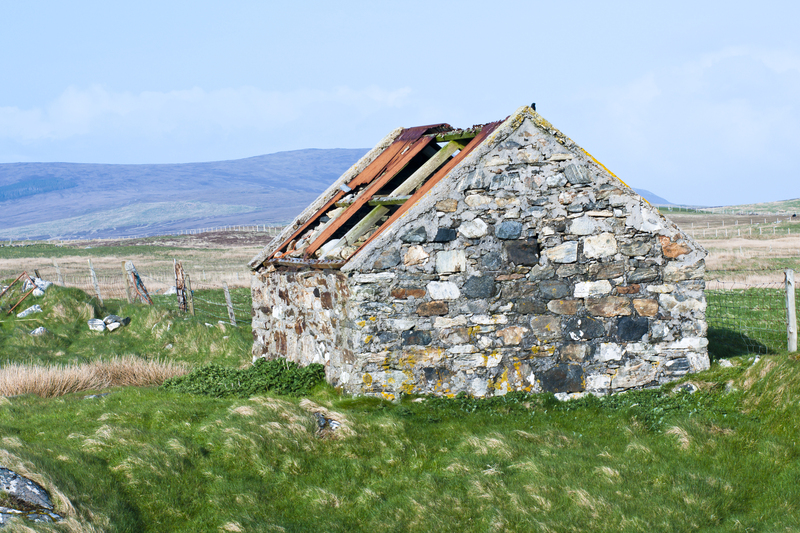Expert Tips on Moving a Piano and the Risks of Doing It Solo
Moving a piano is not a task to be taken lightly. Whether it's an upright, baby grand, or concert grand, pianos are among the heaviest, bulkiest, and most delicate instruments found in homes and performance venues. Many homeowners and musicians might wonder if it's possible to move a piano themselves. While executing a DIY piano move may seem like an economical solution, it often involves hidden risks and can lead to costly mistakes. Discover expert tips on moving a piano and learn about the risks of moving a piano alone to help decide the safest and most effective approach.

Understanding the Complexity of Piano Moving
Pianos are intricate musical instruments composed of thousands of parts, some of which are extremely sensitive to disturbance. Their sheer weight--which can range from 300 pounds for a small upright, up to 1,400 pounds for a concert grand--combined with their awkward shape and delicacy make piano moving a precise operation.
- Weight Distribution: The heavy iron plate inside a piano is balanced by the lighter wooden components. Mishandling can shift this balance, risking damage.
- Internal Mechanisms: The keyboard, strings, and hammers can be thrown out of alignment with even a minor jolt.
- Exterior Finish: Scratches, dents, and gouges are common outcomes of improper handling.
Due to these factors, piano moving is best treated as a specialized skill rather than an ordinary furniture move.
The Risks of Moving a Piano by Yourself
Physical Injuries
The number one danger of moving a piano solo is personal injury. Pianos are not only heavy, but their awkward weight distribution can catch even seasoned movers off guard. Lifting incorrectly or being caught off balance can result in:
- Back and neck injuries
- Muscle strains, sprains, or tears
- Crushed fingers or toes
- Severe bruising or broken bones if the piano drops or tips over
Even with basic equipment, most homeowners are ill-equipped to handle the physical demands and hazards involved in moving such a massive item.
Damage to the Piano
Attempting a DIY piano move risks both the soundboard and exterior finish of the piano. Potential damages include:
- Cracked or broken legs and pedals
- Misaligned or broken keys
- Severed strings or cracked soundboards, which can cost thousands to repair
- Scratches, chips, or finish damage
- Internal misalignment leading to poor tonal quality
Most standard homeowner insurance policies do not cover damage that occurs during a self-move. The cost of fixing a damaged piano could easily exceed the cost of professional movers.
Property Damages
Pianos are notorious for damaging floors, stairs, and door frames during moves. Maneuvering a piano--especially when negotiating tight turns, staircases, or loading into a truck--can result in:
- Gouged wood floors
- Cracked tiles or torn carpets
- Dented walls and baseboards
- Broken stair railings
In apartment or rental properties, such damages could result in loss of deposits or costly repairs.
Essential Equipment for a Safe Piano Move
If you must attempt to move a piano without professional help, having specialized equipment is essential. Here's what the experts recommend:
- Piano Dolly: Specifically designed to support the weight and dimensions of upright and grand pianos.
- Heavy-duty Straps: Help to secure the piano during the move, reducing the risk of slipping.
- Padded Blankets: Used to protect the piano and surrounding surfaces from scratches or impacts.
- Gloves: For a firm grip and protection of hands and fingers.
- Ramp: Essential for loading the piano onto a moving truck or navigating stairs.
- Measuring Tape: Ensures all passages are clear and accessible for the piano's size.
Note: Even with the right tools, the risks remain significant if you lack experience and a team of strong helpers. Expert piano movers use industry-specific equipment and trained tactics to avoid injury or damage.
Step-by-Step Guide: How Professionals Move a Piano
Understanding the professional technique can highlight why hiring piano moving experts is worth the investment. Here's an overview of the process:
1. Evaluate the Move
Professional piano movers assess both the instrument and the route to be traveled. They measure doors, stairs, and hallways, checking for obstacles and mapping out the easiest, safest path.
2. Prepare the Piano
- Secure the Lid and Keys: Close and lock the keyboard lid (if possible), then use padded blankets to wrap and secure the entire instrument.
- Remove Detachable Parts: Grand pianos often have their legs, pedal lyre, or music rack removed for safer handling.
3. Lifting and Moving
Using a team of at least three to four trained professionals, the piano is slowly and steadily lifted onto a dolly using lifting straps and coordinated teamwork. Proper lifting techniques -- lifting with legs, keeping backs straight -- are strictly followed.
4. Navigating Stairs and Tight Corners
Special ramps, boards, or sleds are employed to guide the piano with precision, minimizing contact with walls or rails. Communication is constant among team members throughout the process.
5. Loading Into the Vehicle
The piano is secured inside a moving truck with straps to prevent shifting. Placement ensures that it will not be exposed to excessive vibration or movement while in transit.
6. Unloading and Placement
Upon arrival, the process is reversed with equal care, placing the piano in its new home, ensuring it is level, and free from damage. Professionals even recommend a tuning appointment post-move, as transport can affect the instrument's sound quality.
When Is DIY Piano Moving Not Advisable?
While some piano owners attempt to move small, lightweight spinet or console uprights themselves, DIY piano moving is generally not recommended in the following scenarios:
- Moving Grand or Baby Grand Pianos: Their size, shape, and value make solo moves extremely risky.
- Multi-Story Moves: Navigating stairs presents additional hazards to both the piano and movers.
- Tight Spaces or Complicated Routes: Turns, narrow hallways, and sharp corners require advanced skill.
- Older or Antique Instruments: Vintage pianos are especially fragile and can be irreparably damaged by movement.
If you find yourself facing any of these challenges, hiring a professional piano moving service is the safest course.
How to Choose the Right Piano Moving Company
For the best protection of your instrument and property, select a company specializing in piano transportation. Here are expert tips to consider:
- Verify credentials: Ensure the movers are licensed, insured, and have positive customer testimonials.
- Ask about experience: Look for companies with a dedicated track record in piano moving, not just general moving.
- Request a detailed quote: Understand all costs upfront, and ask what is included (wrapping, assembly, tuning, insurance).
- Check equipment: Reputable movers use professional-grade dollies, harnesses, and protective gear.
- Discuss the process: Good movers will be transparent about how they will handle your piano and the route they'll take.
Tip: Read customer reviews and seek recommendations from music schools or local piano stores for trusted movers.
Frequently Asked Questions About Piano Moving
Can You Move a Piano by Yourself?
While physically possible in very rare cases (such as with a lightweight spinet upright and strong helpers), it is never recommended to attempt moving a piano alone due to the risks of injury, instrument damage, and property loss.
What's the Cost Difference Between DIY and Professional Piano Moving?
Professional piano moving can cost between $200 and $1,000+, depending on distance, instrument type, and complexity. While a DIY move may seem free, it could end up costing much more if the piano or property sustains damage, not to mention the risk of personal injury.
How Should I Prepare My Piano for a Move?
Secure loose parts, wrap the piano in thick blankets, and make sure the path is clear. But, for best results, rely on professional piano movers who already know industry best practices.
Will My Piano Need Tuning After the Move?
Yes. Moving a piano or exposing it to temperature and humidity changes often causes the strings to shift slightly, affecting overall pitch and tonality. Experts recommend scheduling a tuning session a few weeks after relocating the piano.
Are All Movers Equipped to Handle Pianos?
No. Only specialized piano movers have the necessary equipment, experience, and insurance coverage. General moving companies may not be aware of piano-specific risks.

Conclusion: Protect Your Piano and Your Health
Moving a piano is a task best left to experienced professionals. The risks associated with solo piano moving--from serious injuries to irreparable instrument damage and significant property loss--far outweigh the costs of hiring a specialized team. If you love your piano and value your safety, invest in expert piano moving services. Ensure your instrument remains in superb condition, ready to fill your home or venue with beautiful music for years to come.
Key Takeaways: Safe Piano Moving Strategies
- Never attempt to move a piano alone. Always enlist professional help for large or valuable instruments.
- Understand the unique risks to personal safety, property, and the piano itself.
- Utilize proper equipment and protective tools if you must attempt a move.
- After any move, schedule a professional piano tuning to restore perfect sound.
- Choose certified piano movers with a stellar reputation and insurance coverage.
By following these expert tips on moving a piano and embracing a cautious approach, you'll keep both your cherished instrument and yourself out of harm's way. Don't take chances--trust the experts for your next piano move!